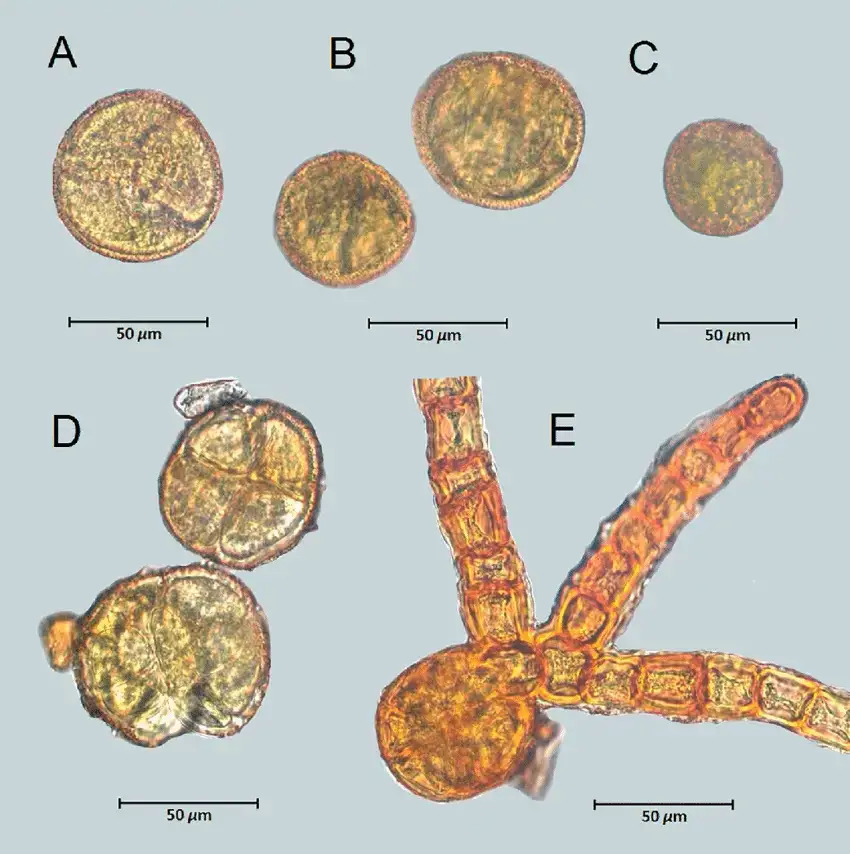
Macrocoma-abyssinica-MuellHal-Vitt-var-abyssinica-A-C-Unicellular-spores.png from: https://www.researchgate.net/figure/Macrocoma-abyssinica-MuellHal-Vitt-var-abyssinica-A-C-Unicellular-spores_fig3_317595504
Macromitrium malacoblastum: The Marvelous Moss of the Orthotrichaceae Family

large.jpeg from: https://inaturalist.nz/observations/88236610
Introduction
Today we’re diving into the fascinating world of Macromitrium malacoblastum Müll.Hal., a unique species of moss in the Orthotrichaceae family. This tiny but mighty plant plays important ecological roles and has some remarkable adaptations. Let’s explore the wonders of Macromitrium malacoblastum!
Background on Mosses
Mosses are small, non-vascular plants in the division Bryophyta. There are over 12,000 moss species worldwide, found in diverse habitats from the arctic to the tropics. As pioneers, mosses are often the first plants to colonize bare rock and soil. They lack true roots, instead absorbing water and nutrients through their leaves.
Morphology and Identification
M. malacoblastum forms dense mats or cushions on tree bark, rocks, or soil. Its stems are creeping to erect, up to 3 cm long. Leaves are lanceolate with a single costa (midrib) and are often crisped when dry. The leaf margins are entire (smooth-edged). Capsules are ovoid to cylindrical on short setae (stalks) and have peristome teeth in multiples of 8.
Global Distribution and Habitat
This species is found in tropical and subtropical regions of the Americas, Africa, and Asia. It grows in lowland to montane forests at elevations up to 1500 m

Macromitrium-prolong01l.jpg from: https://www.digital-museum.hiroshima-u.ac.jp/~museum/habit/moss_habit/Macromitrium prolongatum/Macromitrium_prolongatum.html
. M. malacoblastum is epiphytic on tree bark and branches or lithophytic on rocks and boulders, rarely growing on soil.
Ecological Roles and Adaptations
As an epiphyte, M. malacoblastum plays a role in nutrient cycling and water retention in forest ecosystems. Its mat-like growth traps moisture, organic debris, and provides microhabitats for invertebrates. The leaves have papillose cells which aid in water uptake. Rhizoids anchor the moss to its substrate. Spore dispersal is aided by the hygroscopic movement of the peristome teeth.
| Characteristic | Description |
|---|---|
| Division | Bryophyta |
| Class | Bryopsida |
| Order | Orthotrichales |
| Family | Orthotrichaceae |
| Genus | Macromitrium |
| Species | M. malacoblastum |
| Growth form | Mats or cushions |
| Stem length | Up to 3 cm |
| Leaf shape | Lanceolate |
| Leaf margin | Entire |
| Costa | Single |
| Capsule shape | Ovoid to cylindrical |
| Seta length | Short |
| Peristome teeth | In multiples of 8 |
Conclusion
Macromitrium malacoblastum may be small, but it is a remarkable moss with important ecological functions. Its global distribution and ability to grow on various substrates is a testament to its adaptability. Next time you’re in a tropical forest, take a closer look – you might just spot this marvelous Macromitrium! What other mighty mosses have you encountered on your adventures?